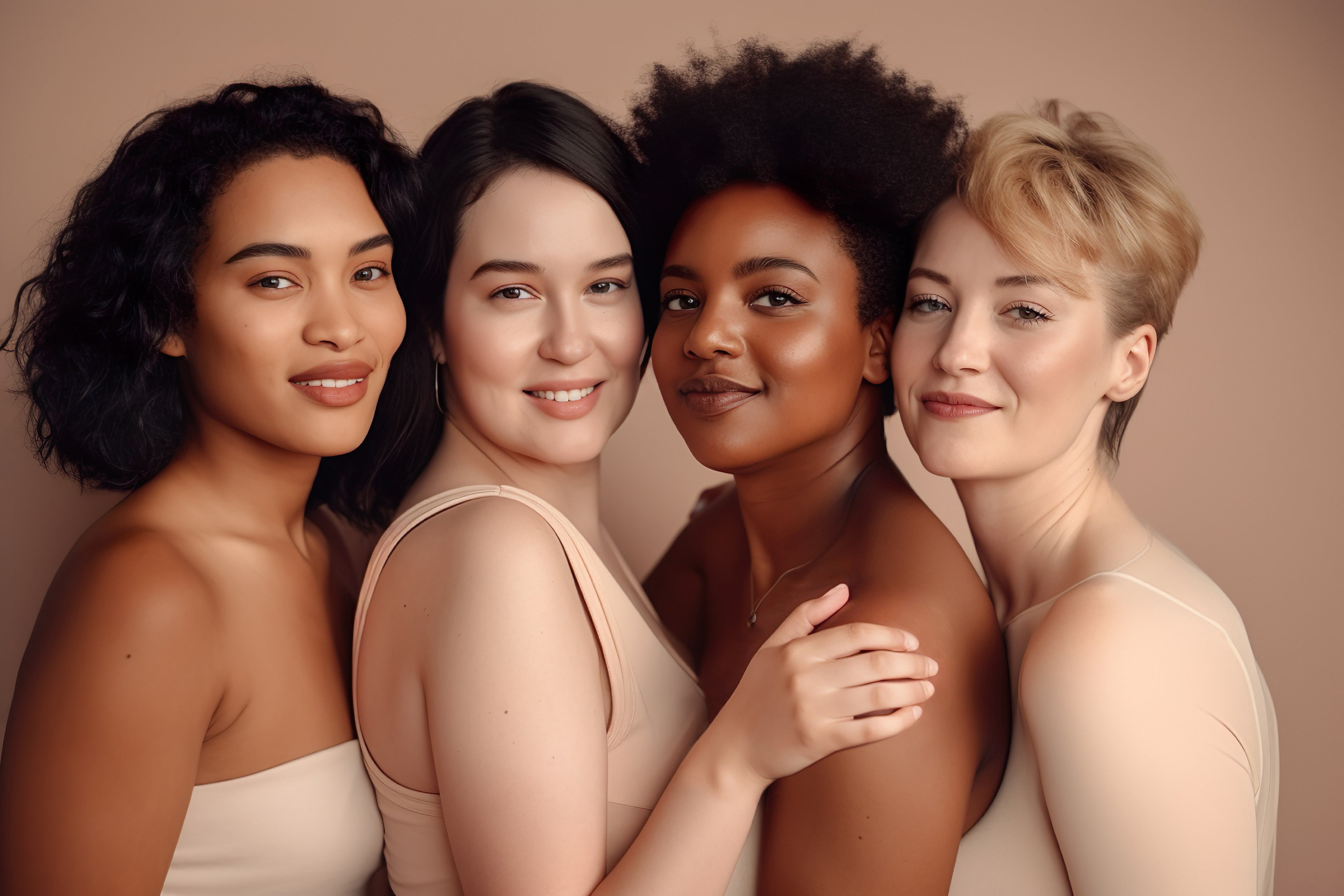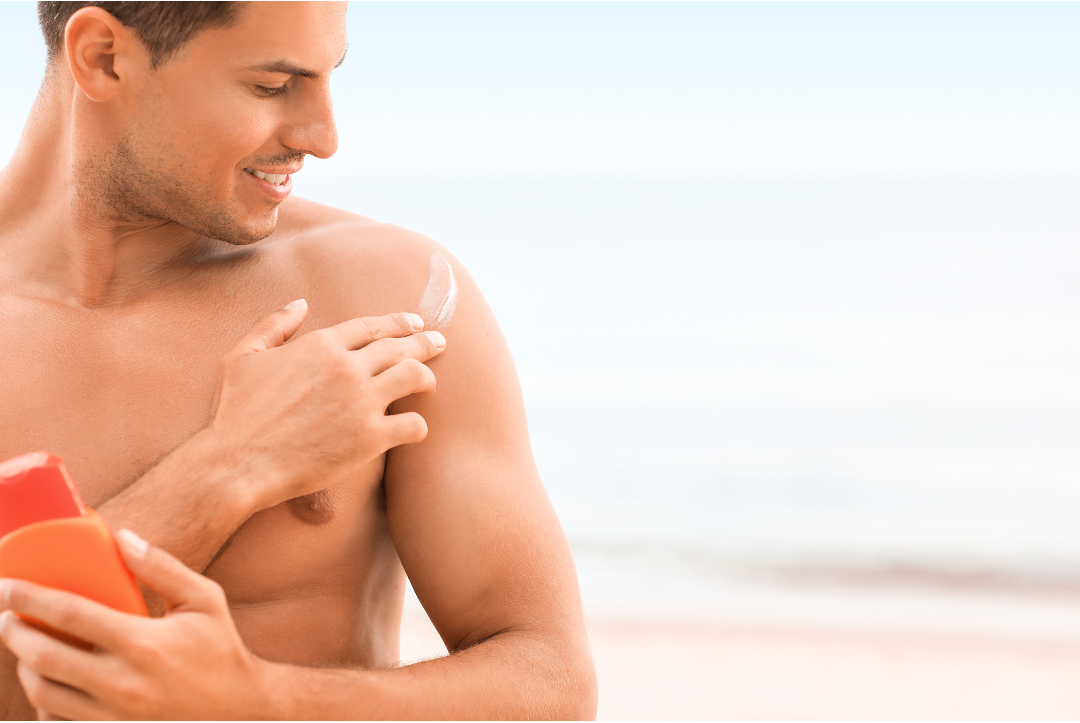Sun Series Part 2: Why so sensitive (or not)?

When it comes to the effects of sun exposure, we are not created equal. While some people can spend hours in the sun without any issues, others may experience sunburn or other adverse effects after just a few minutes. So, why are some people more sensitive to the effects of UV (ultraviolet) radiation than others?
Genetics and Melanin
One of the key factors that determine an individual's sensitivity to UV radiation is their genetics. Melanin is the pigment responsible for skin, hair, and eye colour, and plays a crucial role. People with fair skin generally have less melanin, making them more susceptible to sunburn and other UV-related damage. On the other hand, individuals with darker skin tones have more melanin, which provides some (minor) natural protection against UV radiation (sunscreen still required!). These genetics also play into another key factor influencing sun sensitivity, Skin Type.
Skin Type
No, we're not talking about whether you have oily/dry/combo skin, not that skin type. The Fitzpatrick scale, developed by Harvard dermatologist Thomas Fitzpatrick in 1975, is a system that categorizes skin into six different types based on how it reacts to sun exposure. These types are determined by factors such as skin colour, sensitivity to the sun, and the tendency to develop sunburn or tan. By identifying your Fitzpatrick skin type, you can better understand the risks associated with UV exposure and take appropriate measures to protect your skin.
Let's take a closer look at each skin type:
Type I: Very Fair Skin
People with Type I skin have very fair or pale skin that always burns and never tans. They are highly sensitive to UV radiation and have the highest risk of sun damage, including sunburn, premature aging, and skin cancer.
Type II: Fair Skin
Type II skin is fair and usually burns easily but may eventually develop a light tan. While individuals with Type II skin have a lower risk of sun damage compared to Type I, they still need to take precautions to protect their skin.
Type III: Medium Skin
People with Type III skin have medium-toned skin that may burn initially but eventually tans. They have a moderate risk of sun damage and can still develop sunburn, wrinkles, and skin cancer if not adequately protected.
Type IV: Olive Skin
Type IV skin is olive or light brown and rarely burns. Individuals with this skin type tan easily and have a lower risk of sun damage compared to the previous types. However, they still need to take precautions to prevent long-term skin damage.
Type V: Brown Skin
People with Type V skin have brown skin that rarely burns and tans easily. While they have a lower risk of sunburn and skin cancer, they are still susceptible to other forms of sun damage, such as hyperpigmentation and premature aging.
Type VI: Dark Skin
Type VI skin is dark brown or black and rarely burns. Individuals with this skin type have the lowest risk of sun damage but are still not completely immune. They can still experience skin discoloration and other sun-related issues including skin cancers.
Environmental Factors
While genetics and skin type play a significant role, environmental factors can also contribute to an individual's sensitivity to UV radiation. For example, living in a region with a high UV index, close to the equator or at higher altitudes can increase the intensity of UV radiation and, consequently, the risk of sunburn and other UV-related damage. Certain medications, such as antibiotics, diuretics, and particular antidepressants, can make your skin more sensitive to the sun. It is essential to read the labels and/or consult with your healthcare provider to understand if any medications you are taking can increase your skin's sensitivity to UV rays, and take extra precautions if necessary.
Skincare ingredients that can increase sensitivity to UV
Some active ingredients found in skincare products, and some acne treatments, can make the skin more sensitive to UV radiation. Some examples are included below.
Retinoids
Vitamin A and its derivatives including retinol, retinal, retinyl palmitate, retinyl acetate, and retinyl linoleate (and others) are popular ingredients in many anti-aging skincare products. Topical and oral retinoids (isotretinoin) are also used to treat acne and in Australia the more recognisable trade names are Oratane, Roaccutane or Accutane. While retinoids offer numerous benefits for your skin (clear acne, boost collagen, improve the appearance of wrinkles), they can also make your skin more sensitive to the sun by increasing cell turnover (i.e. the top layer of skin cells is 'younger' rather than crusty old dead cells!). If you use products containing retinoids, it is essential to apply sunscreen daily (I know you are doing this anyway!) and limit sun exposure.
Alpha Hydroxy Acids (AHAs)
AHAs such as glycolic acid, lactic acid and mandelic acid, are commonly found in exfoliating skincare products. These acids help remove dead skin cells, revealing a brighter complexion. However, AHAs can also increase your skin's sensitivity to the sun. It is often suggested to use AHAs at night and it's a must to wear sunscreen during the day to protect your skin.
Beta Hydroxy Acids (Salicylic Acid) are used to assist with skin congestion, and treatment and prevention of breakouts. Salicylic Acid is oil soluble meaning it can get deep into the pore to clean out the dirt and debris that can cause pimples/acne and helpful for improving the appearance of blackheads. The evidence for sun sensitivity from using BHAs is not as strong as AHAs however, many formulas use a combination of both so best to be cautious and wear sunscreen every day then you can't go wrong!
Benzoyl peroxide
This is a popular ingredient in acne-fighting products. While it effectively targets acne-causing bacteria, it can also make your skin more sensitive to the sun. If you use benzoyl peroxide, make sure to apply sunscreen daily and consider using it in your nighttime skincare routine instead.
Certain Essential Oils
Essential oils have gained popularity in skincare due to their natural properties. However, some essential oils, such as bergamot oil, lemon oil, and lime oil, can cause photosensitivity. These oils contain compounds that can react with sunlight and lead to skin irritation. If you use products containing essential oils, be cautious when exposing your skin to the sun.
It is important to note that everyone's skin is unique, and individual reactions may vary. If you are unsure about how certain skincare products may affect your skin's sensitivity to the sun, it is always best to consult with a dermatologist or skincare professional.
The Risks of UV Damage
Regardless of your skin type, genetics, or environmental factors, exposure to UV radiation can have detrimental effects on your skin. UV rays can penetrate the skin's layers, causing DNA damage, premature aging, and an increased risk of skin cancer. Even if you don't burn easily, prolonged sun exposure without protection can lead to long-term damage so it's crucial to adopt sun-safe habits, such as wearing sunscreen, seeking shade, and wearing protective clothing, regardless of your skin type.
References:
- Diffey, B. L. (2002). When should sunscreen be reapplied? Journal of the American Academy of Dermatology, 46(4), 578-581.
- Fitzpatrick, T. B. (1988). The validity and practicality of sun-reactive skin types I through VI. Archives of dermatology, 124(6), 869-871.
- American Academy of Dermatology. (n.d.). Skin Cancer. Retrieved from https://www.aad.org/media/stats-skin-cancer
-
Wheate, N; Schubert, E; Kouladjian O'Donnell, L. Drugs and the sun – your daily medications could put you at greater risk of sunburn. The conversation, published
- Kornhauser A, Coelho SG, Hearing VJ. Applications of hydroxy acids: classification, mechanisms, and photoactivity. Clin Cosmet Investig Dermatol. 2010 Nov 24;3:135-42. doi: 10.2147/CCID.S9042. PMID: 21437068; PMCID: PMC3047947.
-
Kornhauser A, Wei RR, Yamaguchi Y, Coelho SG, Kaidbey K, Barton C, Takahashi K, Beer JZ, Miller SA, Hearing VJ. The effects of topically applied glycolic acid and salicylic acid on ultraviolet radiation-induced erythema, DNA damage and sunburn cell formation in human skin. J Dermatol Sci. 2009 Jul;55(1):10-7. doi: 10.1016/j.jdermsci.2009.03.011. Epub 2009 May 2. PMID: 19411163; PMCID: PMC2791365.
- Wang, S. Q., Balagula, Y., & Osterwalder, U. (2011). Photoprotection: a review of the current and future technologies. Dermatologic Therapy, 24(1), 31-47.
- Lim, H. W., Collins, S. A., & Resneck, J. S. (2011). The underuse of sun protection measures: results from the National Ambulatory Medical Care Survey, 2007 to 2008. Dermatologic Surgery, 37(10), 1468-1473.



